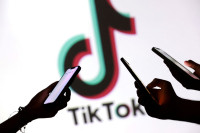Science & Technology
Taking Nepali podcasts forward
Podcasts are taking off in Nepal with serious business opportunities available for budding broadcasters.
Asmita Manandhar
Ben Hammersley coined the term ‘podcast’ in his 2004 article published in The Guardian. But it was more an afterthought than a deliberate and conscious naming—his editor needed him to add one more sentence to fill out the page, so he put the question to the readers. “What to call it? Audioblogging? Podcasting? GuerillaMedia?”
After 15 years since the term was coined—even if a fluke or treated as an afterthought—the technology’s popularity has certainly seen it become entrenched in media. It started as a means for alternative digital content, a closer relative to personal blogs, in audio format, but its prominence has seen a significant upsurge, drawing audiences as well as moneyed interests. Although internationally, podcasts have transcended their value from independent creators to established media houses, the trend is still taking baby steps in Nepal, say local podcast creators.
“Many creators are just into podcasts as a hobby for now,” says Madhu Acharya, co-founder and CEO of Sharecast Initiative, an organisation catering to varied interests, from research and audience data insights, media content innovation, training and capacity building in radio sector to digital content distribution and marketing. “And that takes away any chances for sustainability.”
Acharya has been working in media, specifically in radio, for the last 23 years and views the new podcasting trend as a renewed and repackaged version of classic radio production. With his rich experience in content production, distribution and revenue generation, he and his team have been supporting new creators to find various platforms for their content to engage and create their own audiences. One podcast they are supporting is The False Nine, a podcast mainly focusing on European football leagues—it has been gaining considerable momentum among sports aficionados.
“According to our data, there are 4,000 regular listeners for The False Nine podcast,” says Acharya.
But it is a challenge to gather such data for independent creators, says Itisha Giri, one half of the duo who hosts BojuBajai podcast. BojuBajai is regarded as one of the most popular podcasts in the Nepali sphere; it is not just appreciated for its content but also for its consistent and regular production.
“Our primary platform is SoundCloud but it is also featured on Hamro Patro and Nepali podcast apps,” says Giri. “So the number of our plays is scattered, but we can say that approximately we have 1,000 plays per episode.” BojuBajai has released 30 episodes since it started three years ago.
Giri admits they did not think the podcast would come this far when recording their first episode—under a table at her podcast partner’s workplace during after work hours. “But we received amazing audience engagement and feedback, which pushed us to produce more episodes,” she says.
The BojuBajai duo met when they were both auditioning for Vagina Monologues, an episodic play in Kathmandu. After realising they shared a common interest in critically reviewing broader Nepali popular culture, they hit it off. But soon, they had to work in a long-distance set up as Giri had to leave for Spain. Although they put in a lot of effort, pitching ideas and concepts through shared documents and Skype calls before recording an episode, it is still a side gig for both.
“For now it is free but that does take away our scope of growing—content-wise as well as technically,” Giri says. “We would like to monetise our content in the future and make it a financially viable option for both of us, so that we can elevate the quality of our content.”
Giri’s concerns tie back to Acharya’s emphasis on sustainability and audience engagement. But unlike for new and coming podcasts, BojuBajai has managed to cultivate a loyal audience base, says the founder. But in order to grow further, they are also working with Acharya to explore the cross-platform options.
“What sets podcasts different from traditional radio production is its personalised delivery,” says Acharya. “It caters to independent creators and does not require a radio station for one to be a broadcaster—and audiences have a myriad of choices that they can tune into, in their own time.”
This has also trickled down to the choice of platforms for both creators and their audiences. Although SoundCloud, Spotify and iTunes may have been the primary preferred platforms, posting podcasts in video form on YouTube has been the latest podcasting trend. Despite being a video-focused platform, the popularity, as well as the number, is also seeing a constant increase.
The platform hosts more than half-a-dozen Nepali podcasts.
“We already had a video background and felt that having a video could definitely elevate our content,” says Kailash Gurung, a member of Shutter Corp’s podcast team. “The audiences can also look at the person’s expressions and have more context on what they are saying.”
But not all agree with the concept of mixing video with podcasts, as podcasts are supposed to be completely audio-based production.
“If it’s on YouTube, I don’t think you can call it a podcast,” says Giri. “The essence and motivation are entirely altered when it is on a video-sharing platform.”
Acharya agrees with Giri. But his concerns are not about the definition of a podcast, rather surround the sustainability and costs, compared to audience engagement.
“The audio format has more scope and opportunity than the video format, and can cater across different platforms,” he says. “For Nepal, it is still a unique idea and has a big opportunity for both independent creators and established media houses.”
***
What do you think?
Dear reader, we’d like to hear from you. We regularly publish letters to the editor on contemporary issues or direct responses to something the Post has recently published. Please send your letters to [email protected] with "Letter to the Editor" in the subject line. Please include your name, location, and a contact address so one of our editors can reach out to you.




 8.12°C Kathmandu
8.12°C Kathmandu.jpg)










